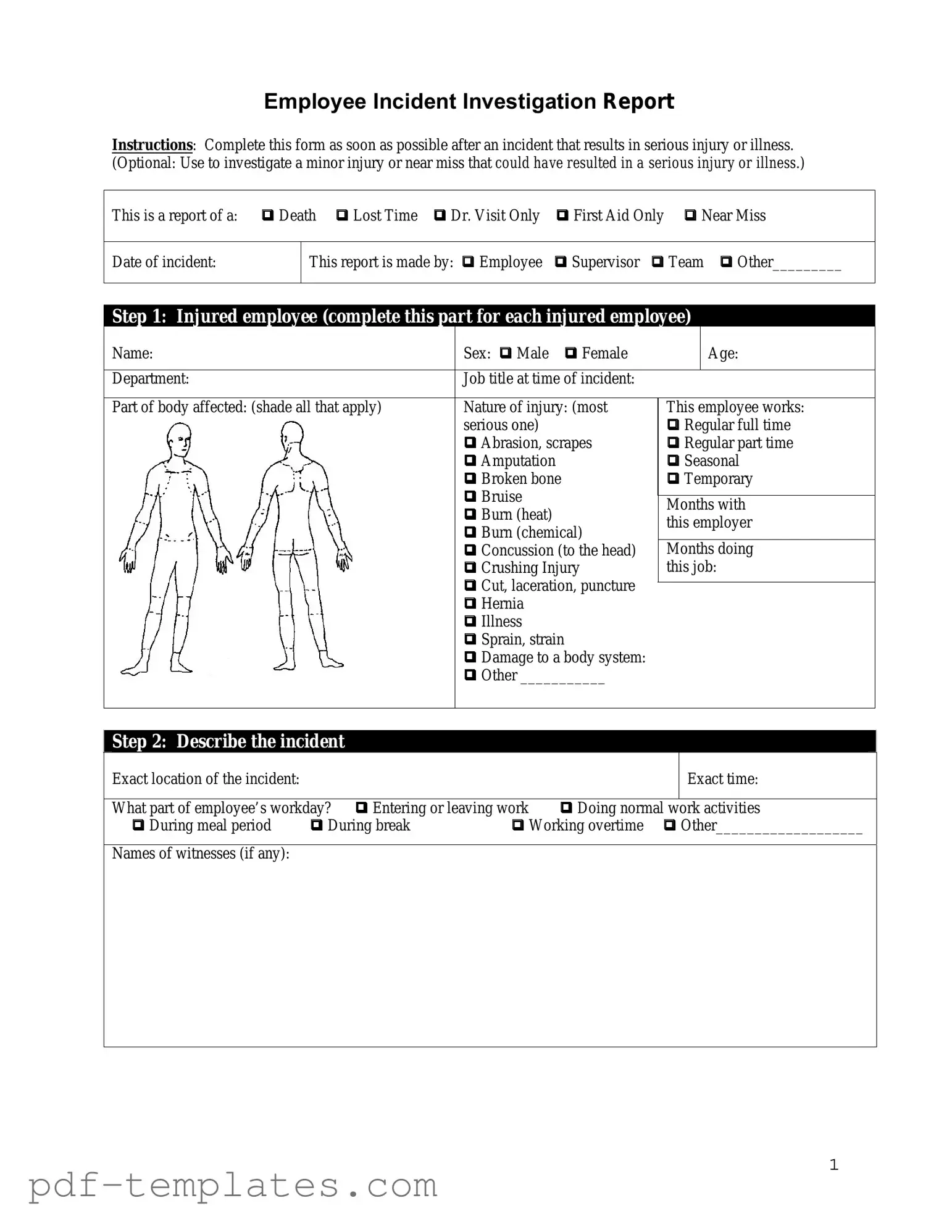The Incident Report form serves a similar purpose to the Employee Accident Report form by documenting events that lead to an injury or accident in the workplace. This form typically captures details such as the date, time, location, and nature of the incident. It also includes witness statements and any immediate actions taken. Both forms aim to create a clear record of events to aid in future prevention efforts and ensure accountability.
Another related document is the Workers' Compensation Claim form. This form is used to initiate a claim for benefits following a workplace injury. Like the Employee Accident Report, it requires detailed information about the incident, including the circumstances surrounding the injury and medical treatment received. Both documents are crucial for ensuring that employees receive the support they need while also providing necessary information to employers for their records.
The Safety Inspection Report shares similarities with the Employee Accident Report form as it focuses on identifying hazards that could lead to accidents. This report assesses the safety measures in place and documents any unsafe conditions. Both documents emphasize the importance of maintaining a safe working environment and are often used to address and rectify safety concerns proactively.
The Near Miss Report is another document that aligns closely with the Employee Accident Report. This form is used to report incidents that could have resulted in injury but did not. By documenting these near misses, organizations can analyze trends and implement preventive measures. Both reports highlight the need for vigilance in safety practices and contribute to a culture of safety in the workplace.
The Medical Report is also comparable, as it provides detailed information about the employee's injuries and treatment following an accident. This document often accompanies the Employee Accident Report, as it helps to establish the extent of the injury and the necessary medical interventions. Together, they form a comprehensive view of the incident and its impact on the employee’s health.
To streamline the tenant selection process, it is beneficial to utilize the Texas Rental Application form to gather crucial information from applicants. This form assists landlords in evaluating potential tenants and facilitates a smoother leasing experience.
Additionally, the Claim for Disability Benefits form can be seen as related. This document is used when an employee seeks financial assistance due to a work-related injury that prevents them from performing their job. Similar to the Employee Accident Report, it requires documentation of the incident and the resulting disability, ensuring that employees receive the support they need during their recovery.
The Return-to-Work form is another important document that complements the Employee Accident Report. This form is used to outline the employee’s readiness to return to work after an injury, including any restrictions or accommodations needed. Both forms play a vital role in managing the employee's transition back to work, ensuring that their health and safety are prioritized.
Lastly, the Training Record can be linked to the Employee Accident Report form, as it documents the safety training that employees have received. This record is essential for understanding whether employees were adequately trained to handle potential hazards. Both documents underscore the importance of training in preventing workplace accidents and fostering a safer work environment.
